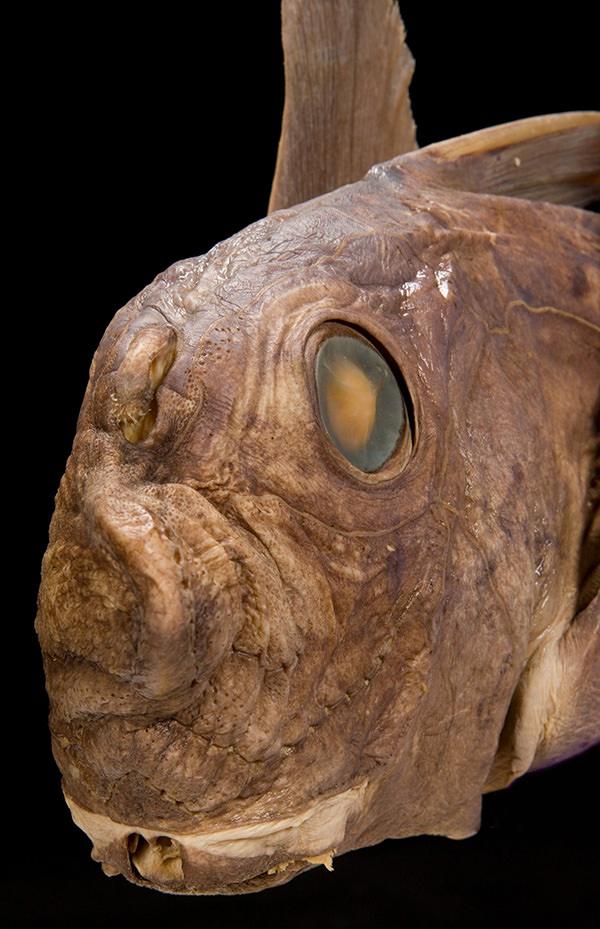The ichthyology collection in the Division of Vertebrate Zoology includes specimens from the darkest regions of the deep ocean. These fishes have been challenged to adapt in ways other vertebrate animals have not. They must find food, and avoid becoming food, in a world devoid of sunlight and under high pressure.
The Peabody collection contains many of these species, including type specimens and specimens from expeditions to Bear Seamount in the North Atlantic. Our collection can help scientists answer questions about the natural history of these often strange-looking creatures.
The New England Seamount Chain begins at the edge of Georges Bank in the Atlantic Ocean off Massachusetts and extends southeast to the Bermuda Rise, a distance of over 1,000 kilometers (540 nautical miles). Composed of more than 20 extinct volcanic peaks, these seamounts have caught the interest of biologists investigating deepsea faunal communities. New research is allowing scientists to sketch a picture of the faunal communities that live on these isolated undersea mountaintops.
In 2000, a team aboard the National Oceanographic and Atmospheric Administration (NOAA) research ship R/V Delaware II collected fish and invertebrates at Bear Seamount, the peak closest to the edge of Georges Bank. These trawls, up to 2,500 meters (1.5 miles) below the sea surface, collected living benthos of the New England Seamounts for the first time, many deposited in the collections at the Yale Peabody Museum.
Deepsea collecting is not new for the Peabody Museum. In the late 19th century, the United States Fish Commission surveyed the coastal waters from Newfoundland to the Carolinas. Addison E. Verrill, Yale’s first professor of zoology and one of the original curators of the Peabody Museum, was for many years in charge of the Commission’s dredging operations and obtained specimens of fishes and invertebrates for the Peabody’s collections. Many of the collecting stations were in deep water, some at depths exceeding 4,000 meters (almost 2.5 miles).
